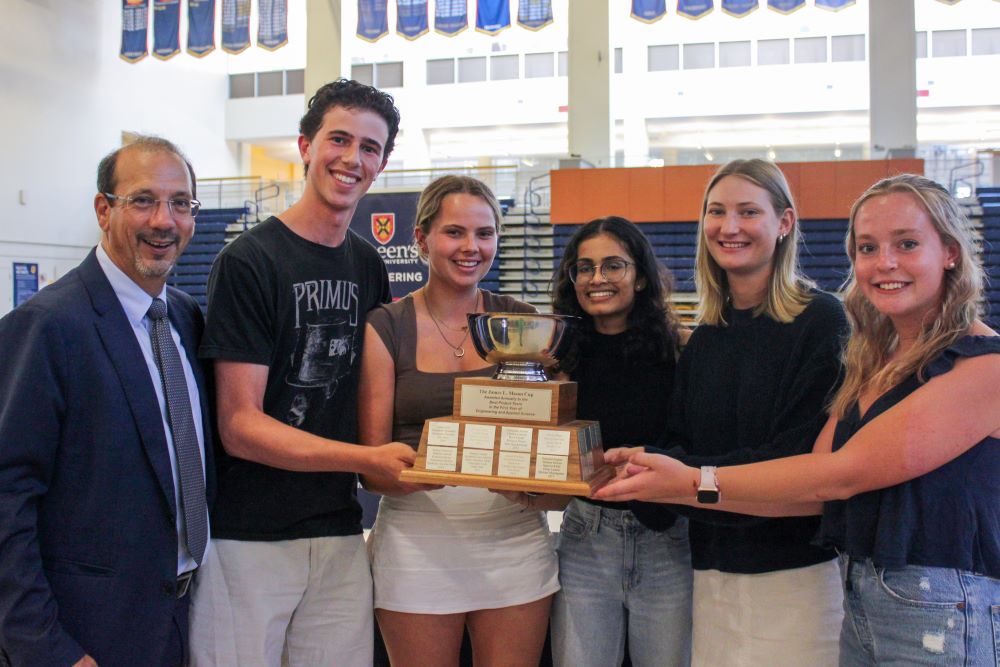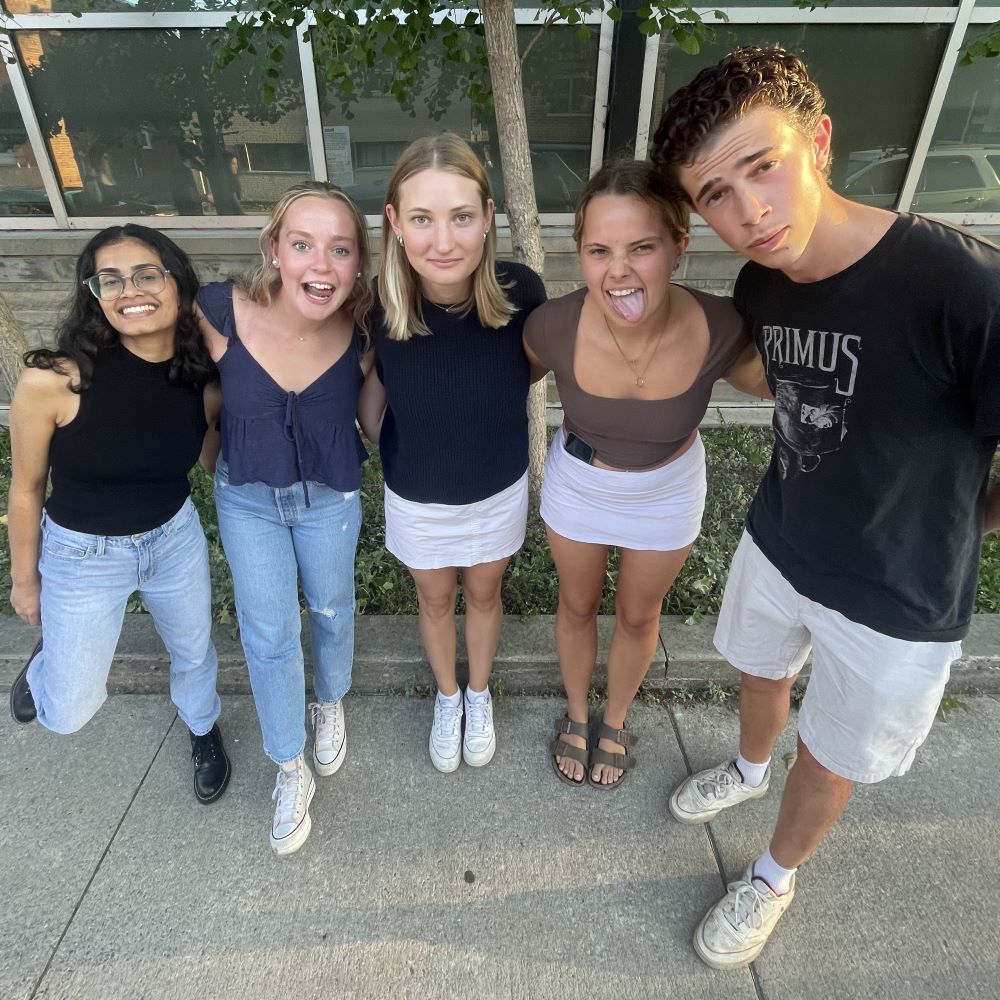
The Mason Cup is awarded each year to the team behind the best project in APSC 103, the first-year course in Smith Engineering at Queen's that pairs engineering students with real-world clients and design challenges.
Jules Braznick, Charlie Angel, Lucy Jardine, Charlotte Sellner, and Pahini Patel took the top honour this year.
“The project was to design a mobile all-season greenhouse for an on-campus café, the Tea Room, located in the Integrated Learning Centre on the Queen’s campus,” Sellner says. “Like many people my age, the health of our planet is a major concern for me, and I really appreciate that the Tea Room is an advocate for the environment with zero consumer waste and carbon neutrality.”
“Our work had to incorporate the Tea Room’s pillars of fiscal, environmental, and educational responsibilities,” Patel adds. “We had several ideas for potential greenhouses with a wide range of strengths and weaknesses for each, including a dome-shaped roof, and walk-in, for example. The strengths of each design were considered and a new idea was formed, which was our final prototype. Some of its strengths were ease of mobility, ease of harvest, maximized growing space, and temperature maintenance.”
Coming up with a sustainable and robust greenhouse was a significant design challenge, and the group applied two core engineering principles to the project from the outset: specialization and teamwork.
“At the beginning we split into specialist roles, which led us to ensure each element of the project was equally looked after and nothing would be forgotten,” Jardine says. “Each group member stuck to elements we were interested in, which made for the best quality work.”
“We split into five specialties, interior structural, exterior structural, irrigation, produce, and soil,” Sellner expands. “This allowed us to divide our deliverables into digestible work, apply our individual research, bring our knowledge together, iterate, and create a well-rounded greenhouse design.”

Randomly paired after individually selecting the greenhouse challenge, the group soon found themselves exercising skills beyond STEM as well, including active listening and financial management. “Sometimes the hardest part was coming to a consensus,” says Jardine. “As the semester progressed, the team got better at this, and always made sure every member had a chance to give their opinion and decide together on the best outcome.”
“Managing the budget and deciding which elements to splurge and which to step back on, was also a challenge. We were able to use a lot of recycled materials such as excess wood and save our budget for items such as heavy-duty casters to emphasize the all-weather mobility aspect of the project. Using recycled materials not only saved us money, but it also added to the goal of being as sustainable as possible to align with The Tea Room’s key pillars,” she says.
The project also featured a number of constraints. “We needed to work around challenges such as irrigation and water collection during the winter, whether it should be electrically heated or well insulated,” Patel says. “Our biggest challenge was having to constantly make adjustments to our design. As time went on, we learned more and more about the real model, leading us to make improvements along the way,” added Charlie Angel.
In the end, the group was happy with the project and its results. “Once the build was put together, it was very sturdy and the wheels held up excellently against several trips across campus and back,” Patel says.
Beyond winning the Mason Cup, the group feels they have bonded as colleagues — a relationship that may continue in Civil Engineering, with three of the five choosing the discipline as they move into second year. “I loved working with everyone and would be more than happy to work on future projects together, whether that be here at Queen’s or in our professional lives,” says Sellner.
“We made an effective team with each member bringing unique abilities that contributed to our successful greenhouse project.”